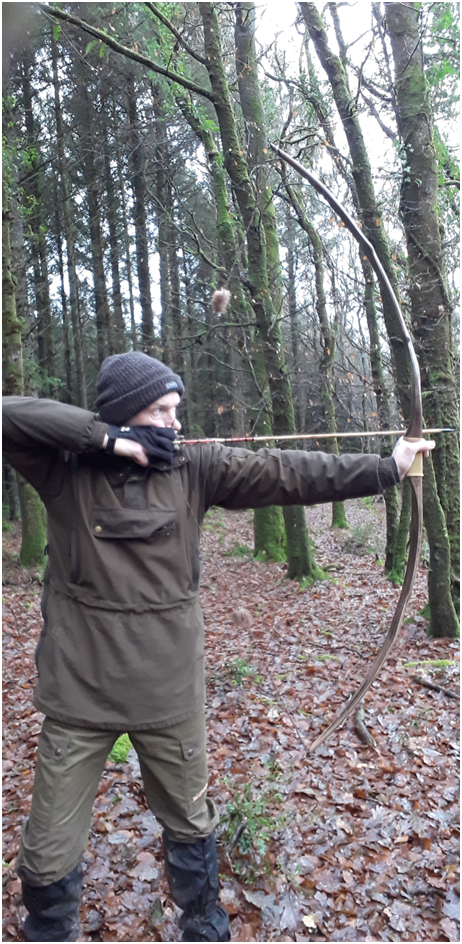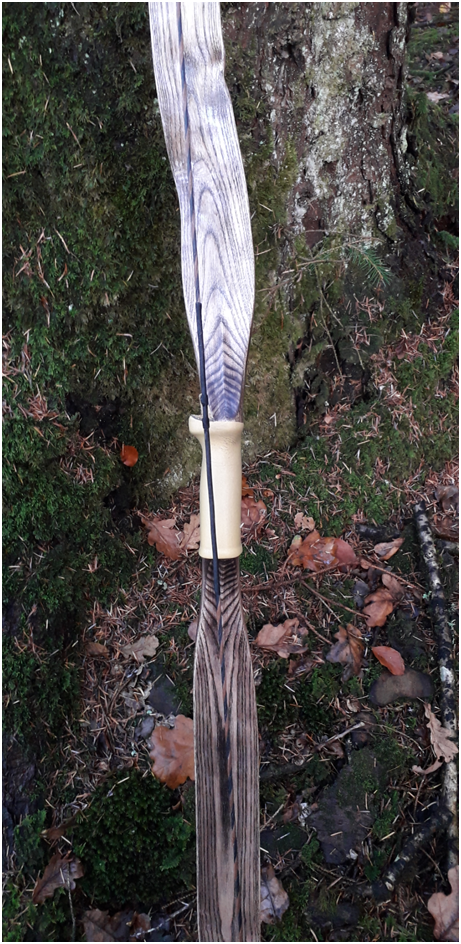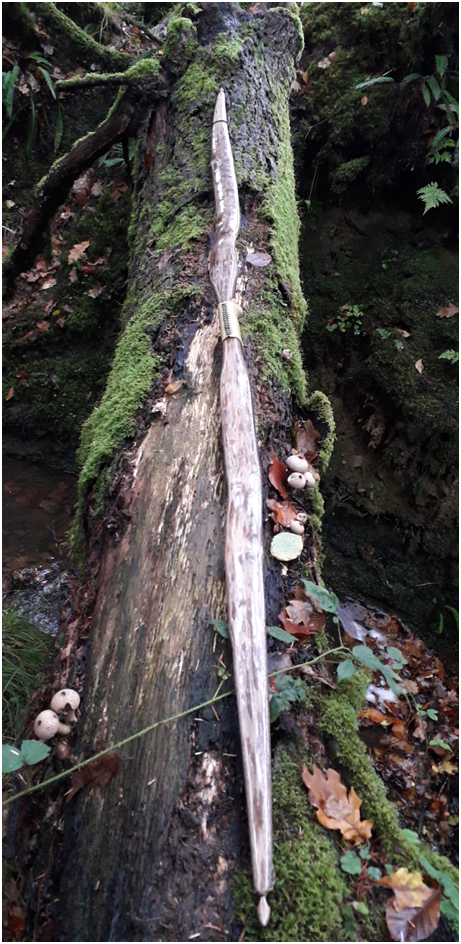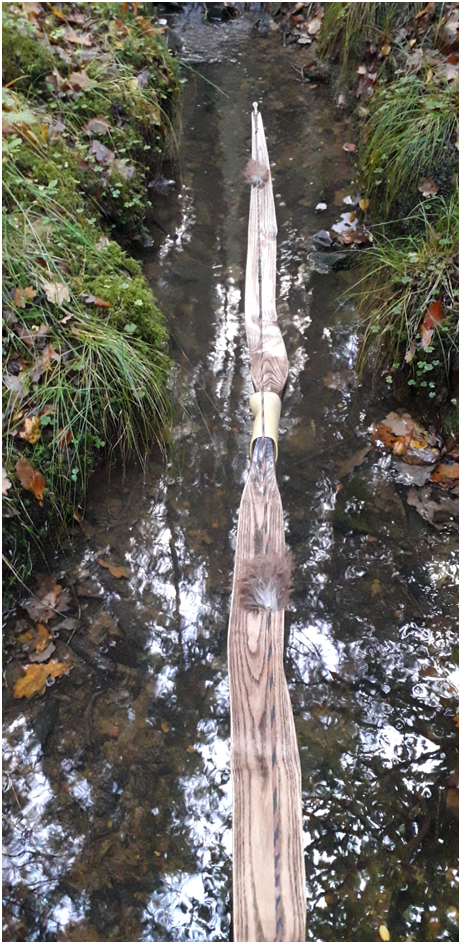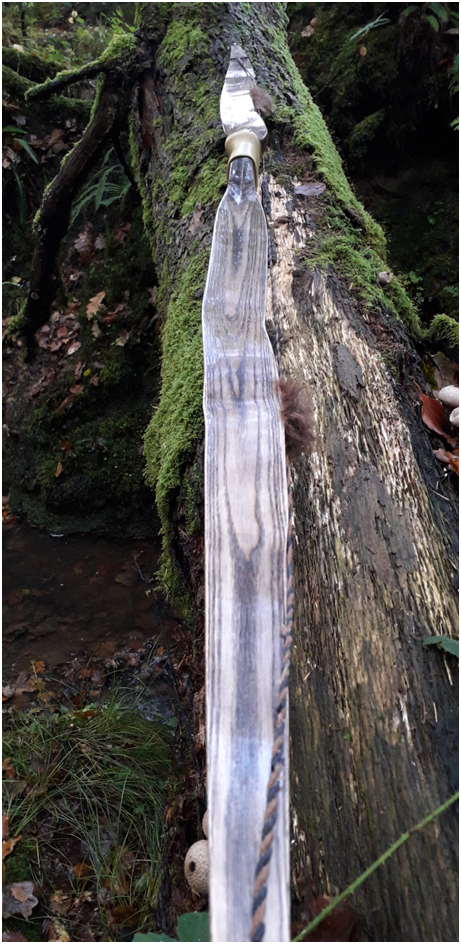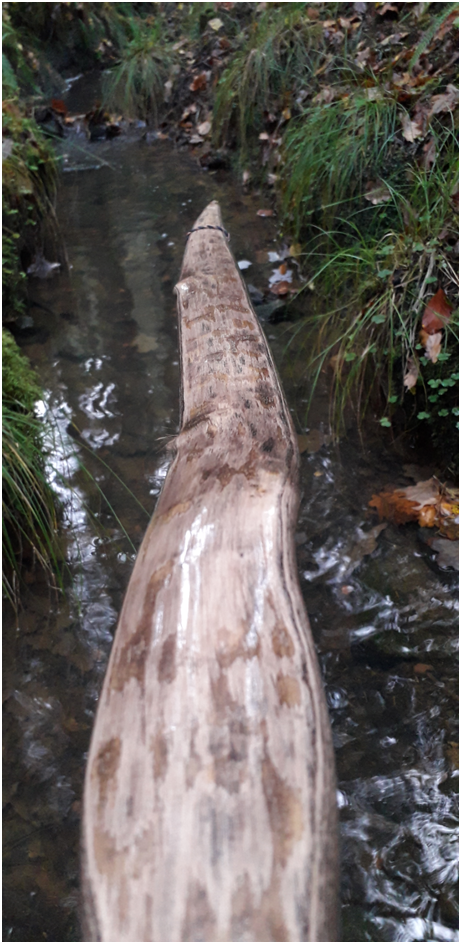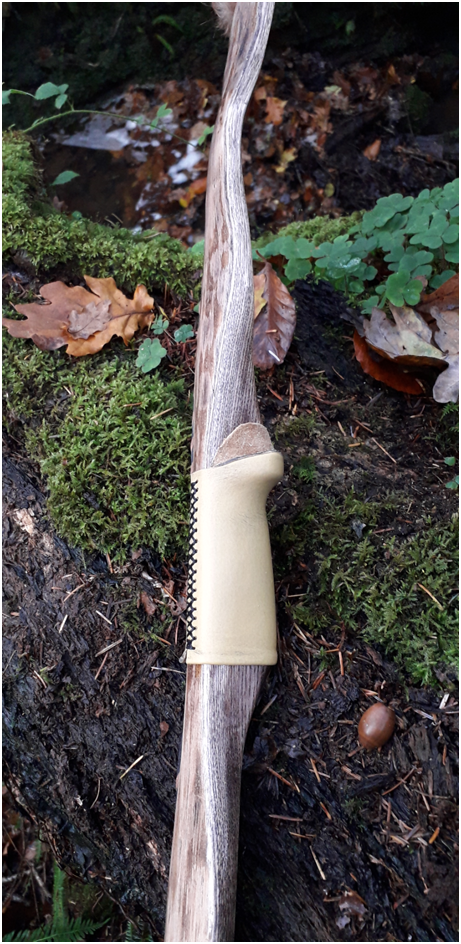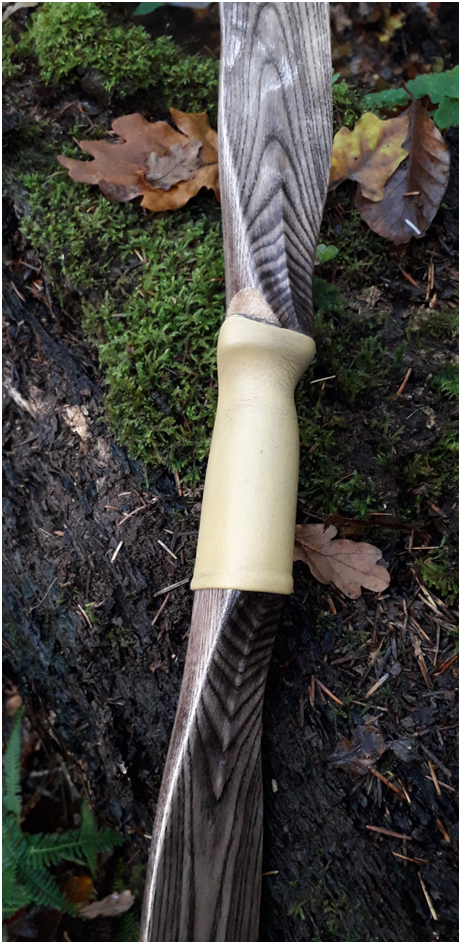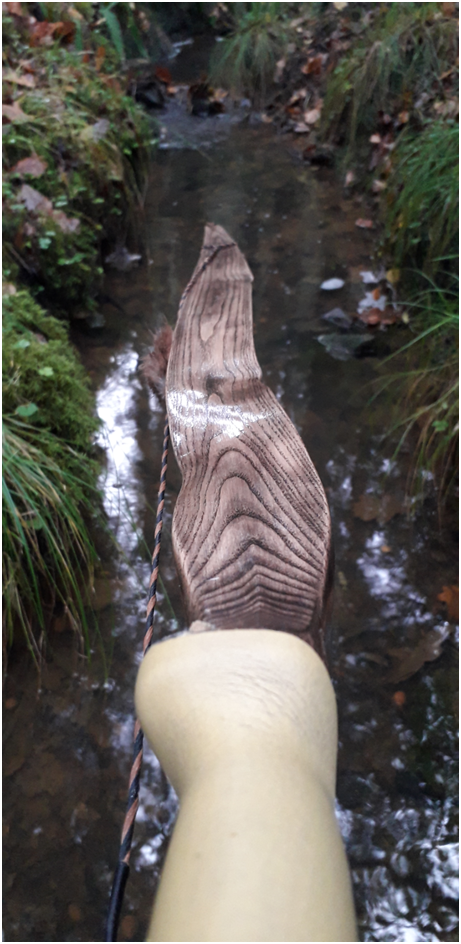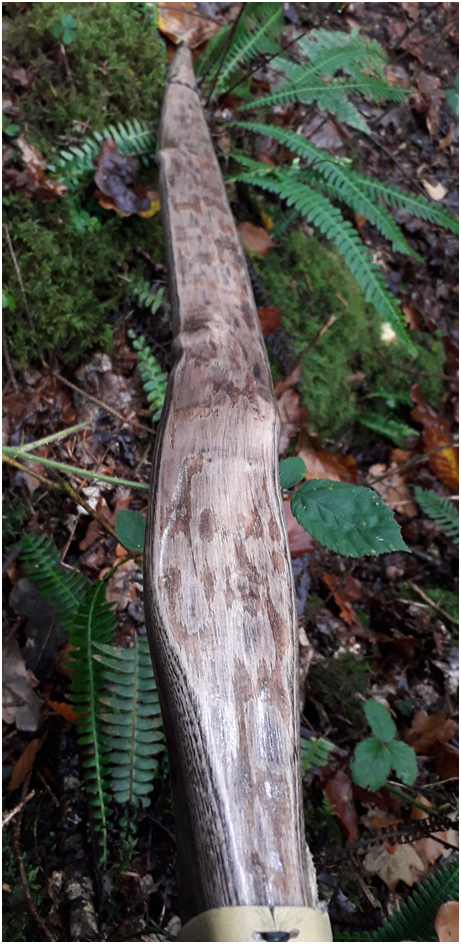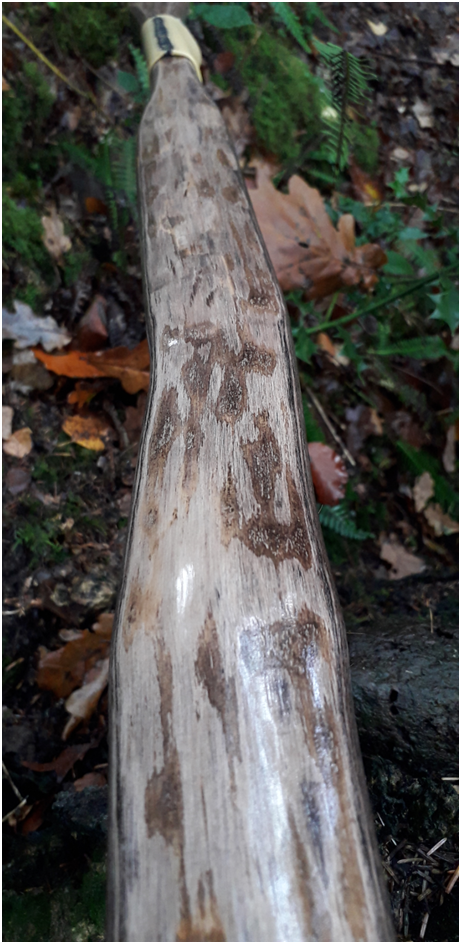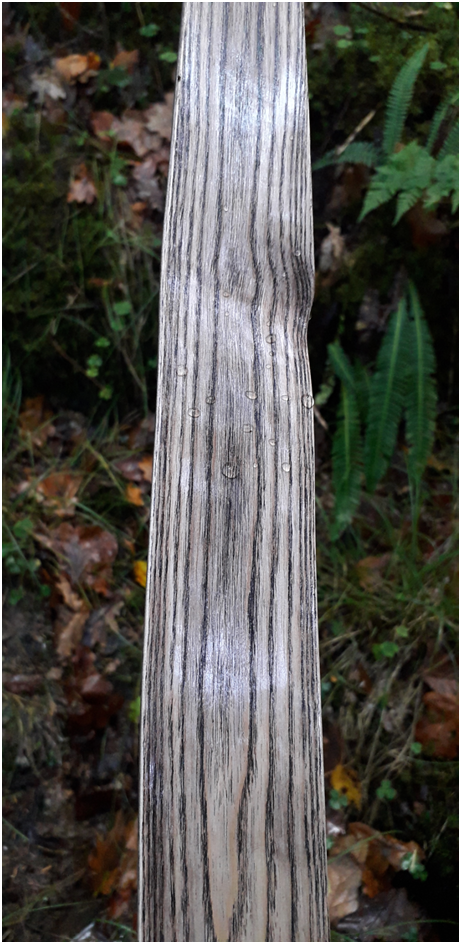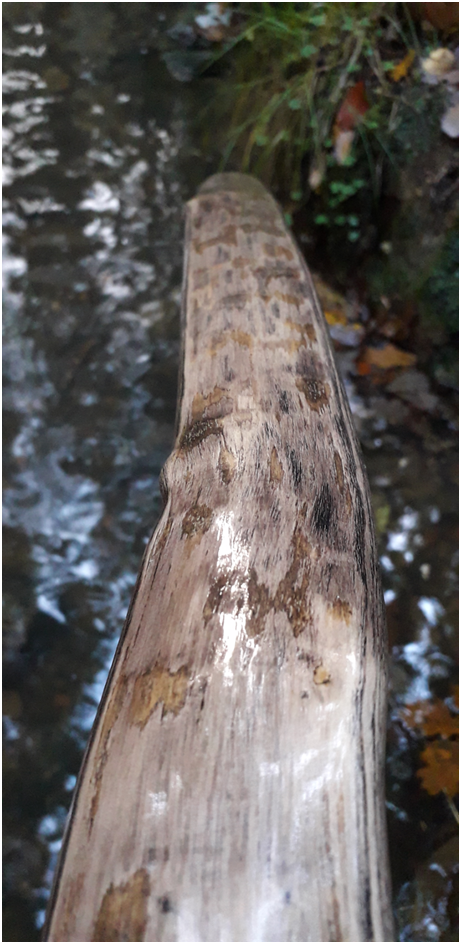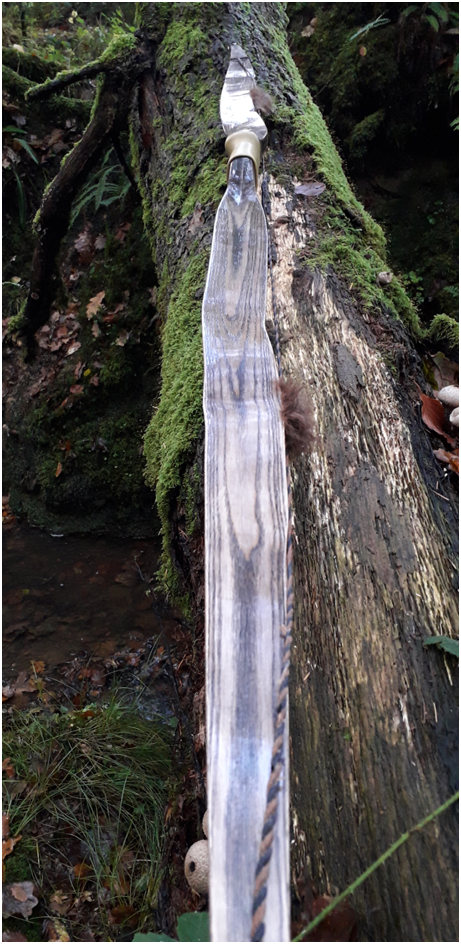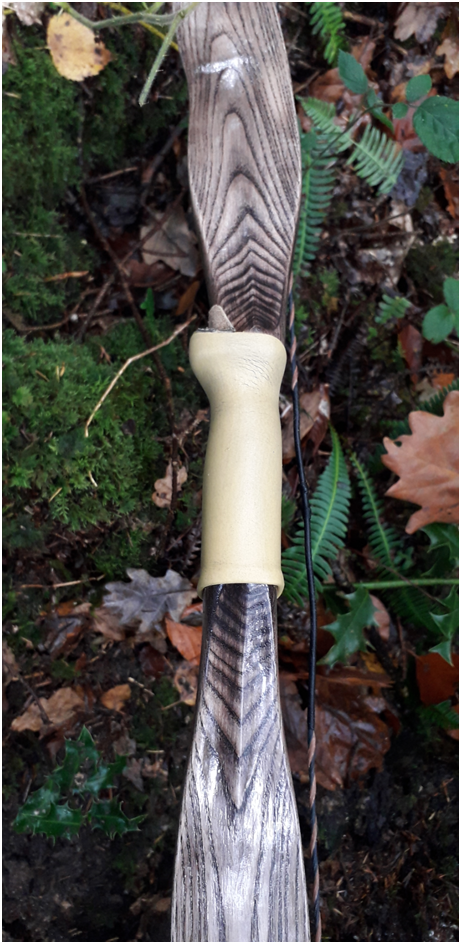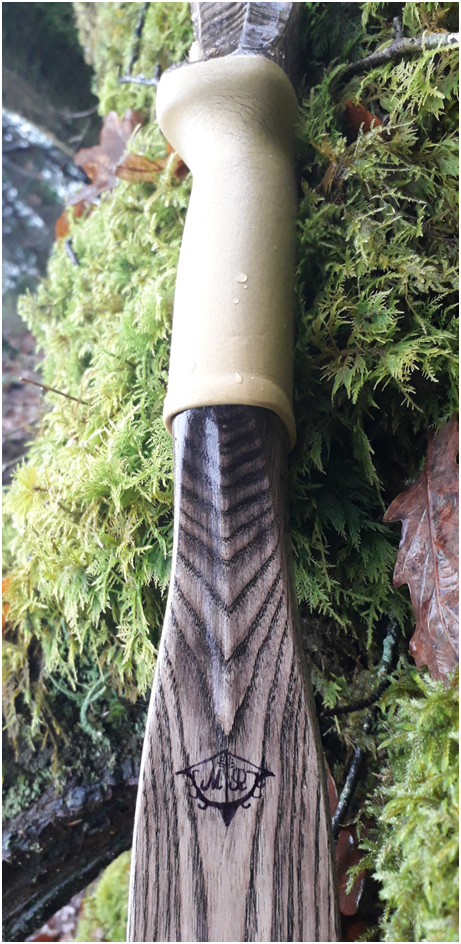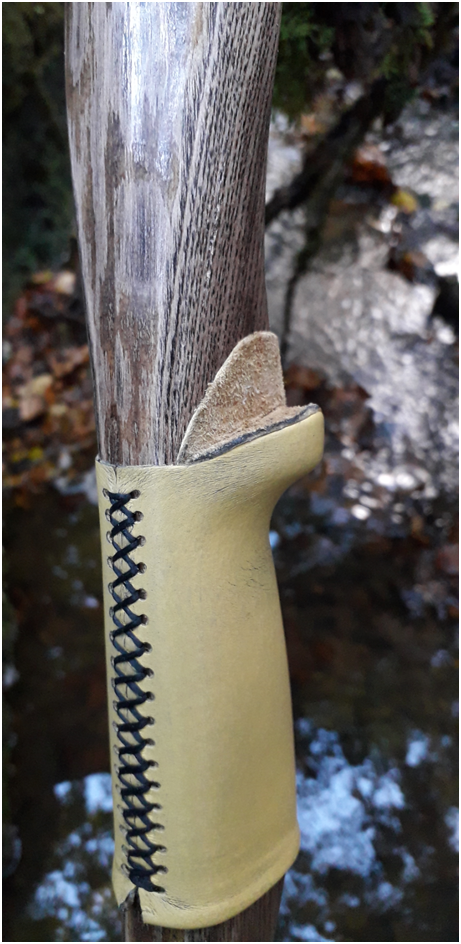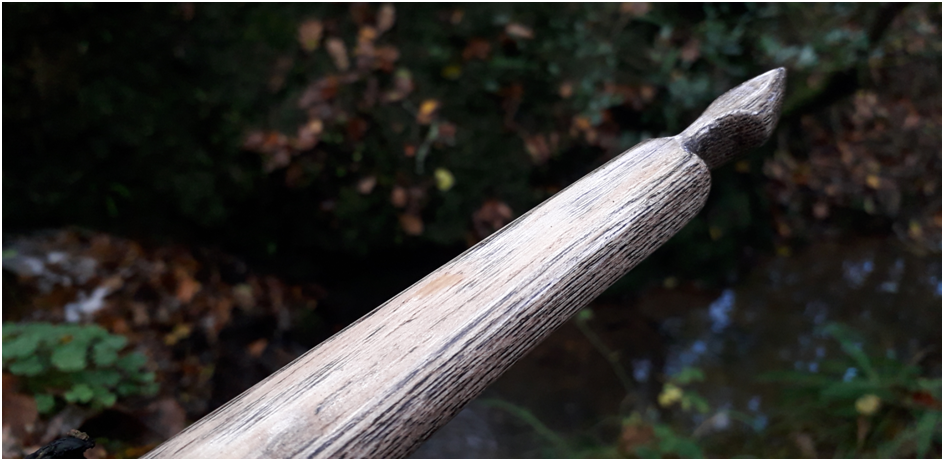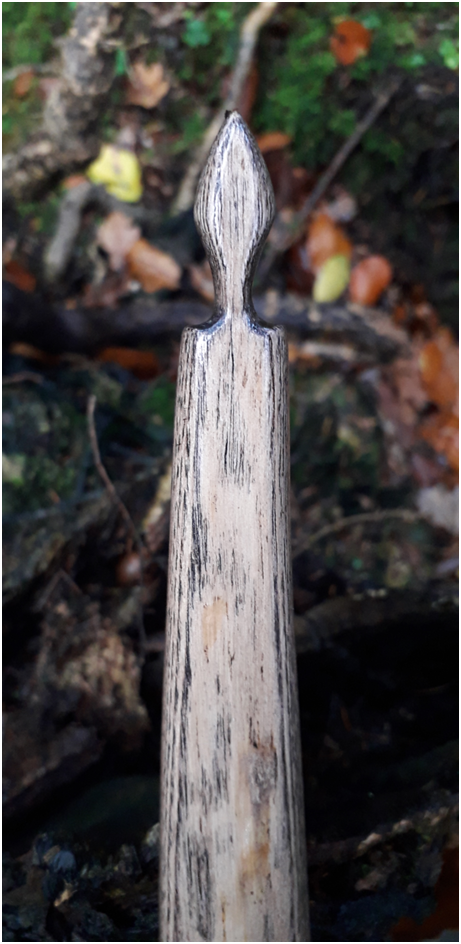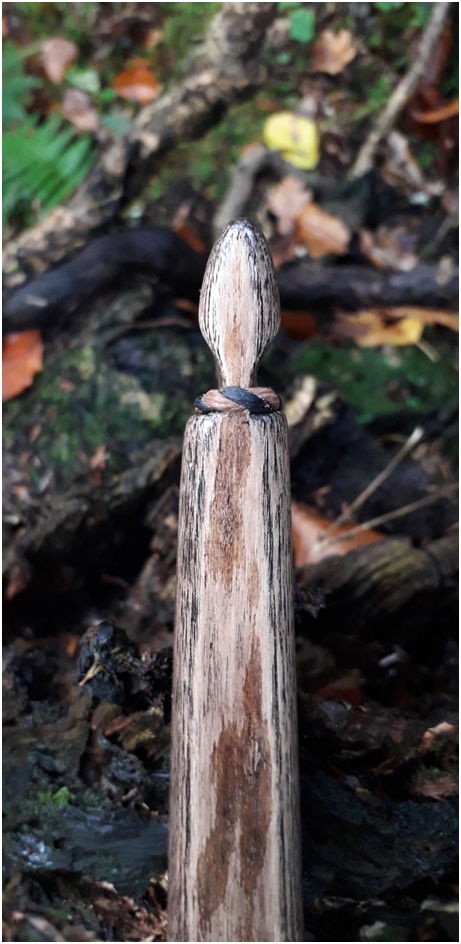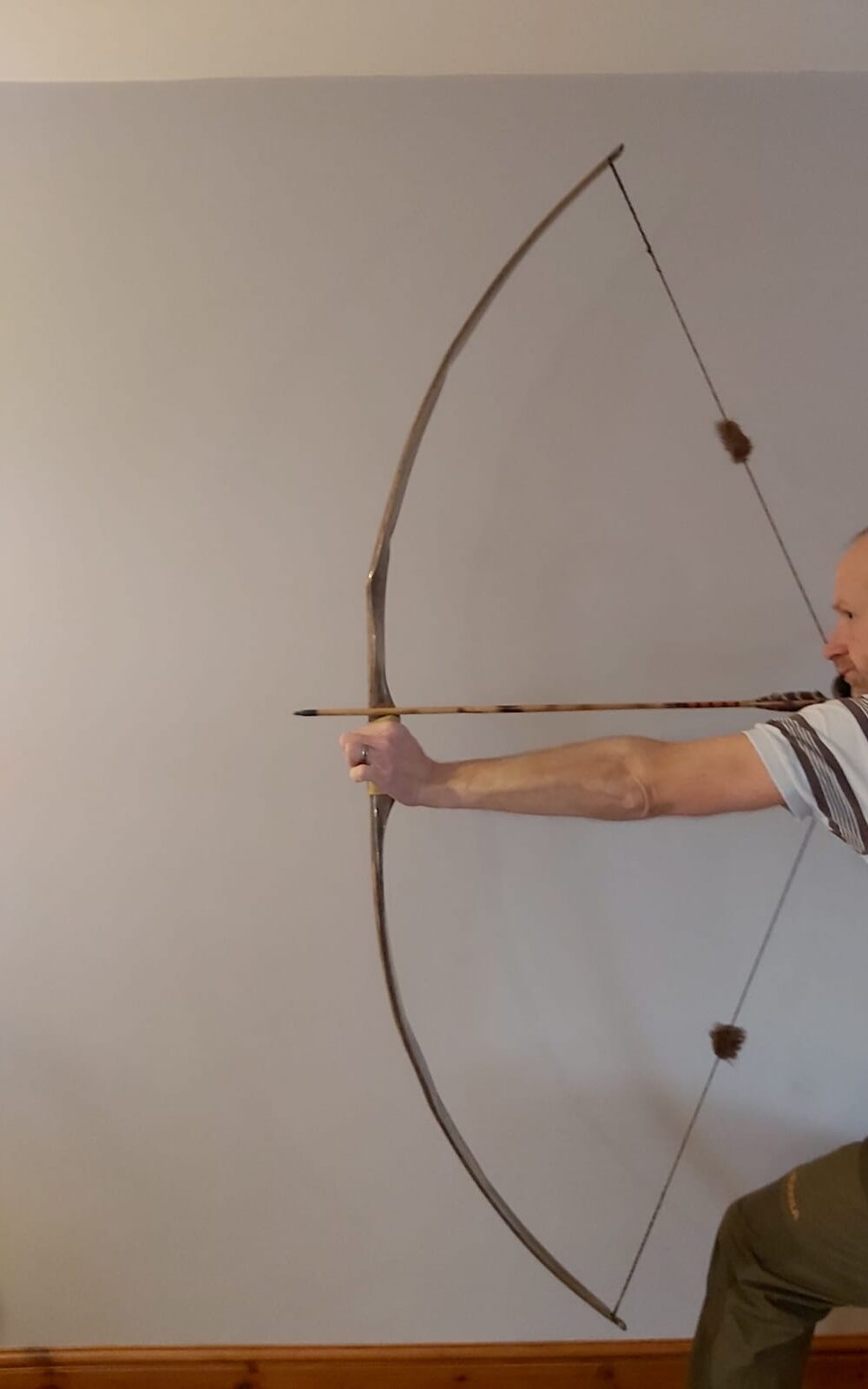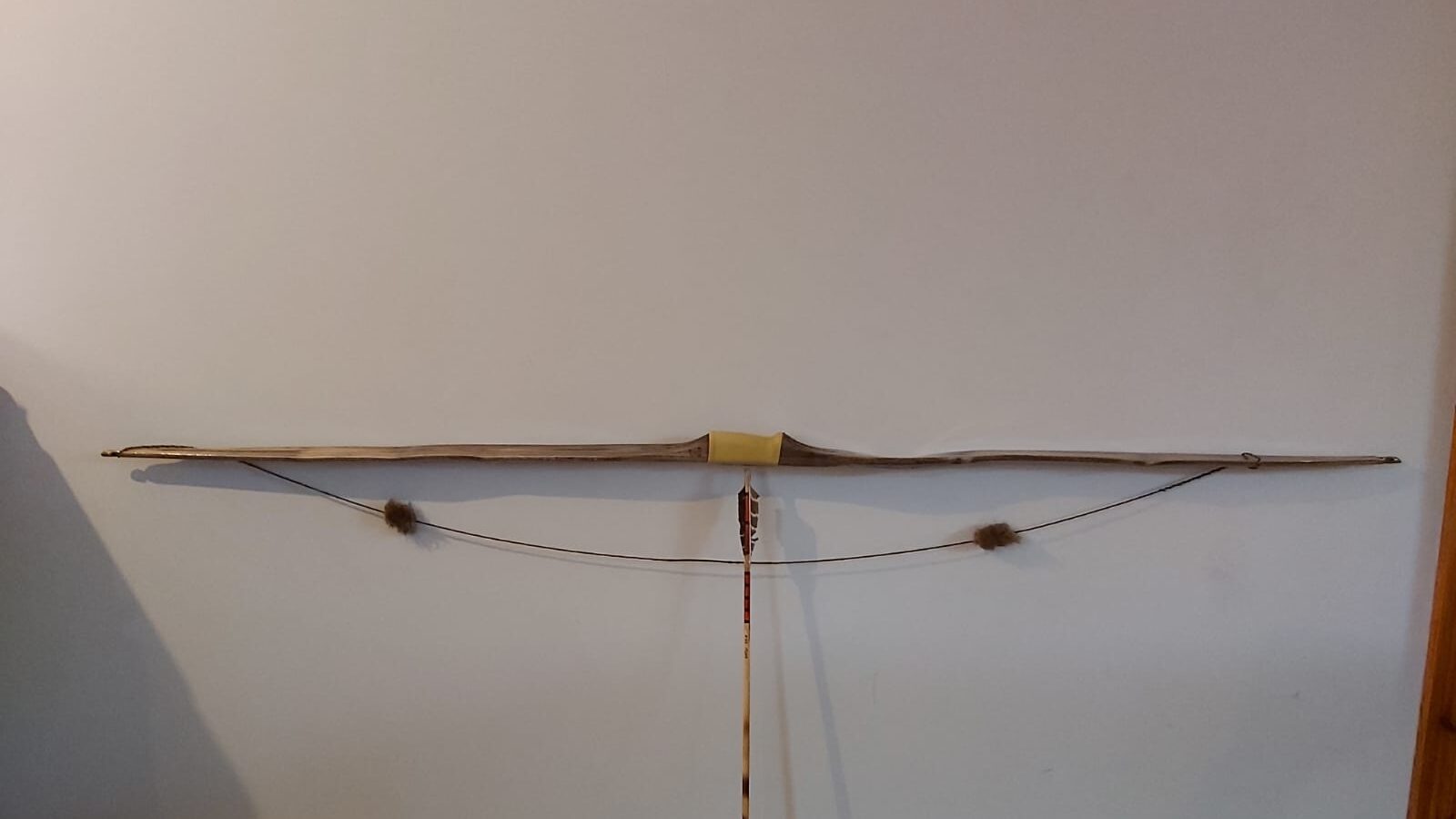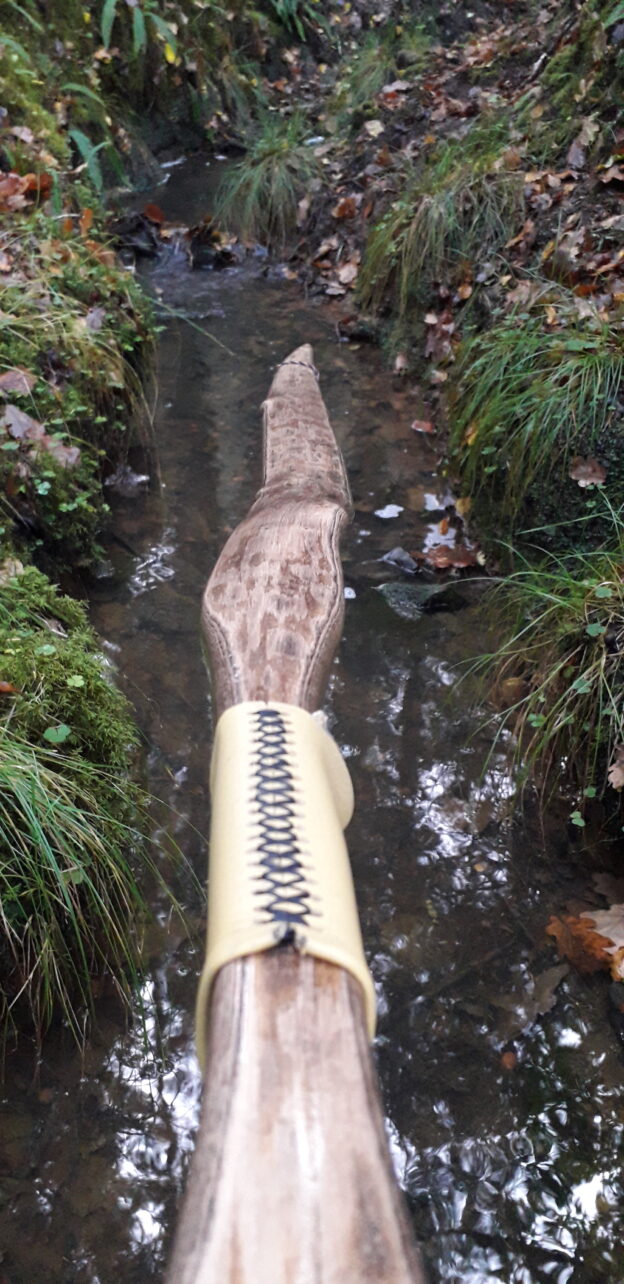The stave for this bow came from a 4” diameter Ash tree which produced two staves. One stave was pretty straight and featureless and I used that stave to make a plain but functional rawhide backed recurved flatbow for a friend of mine. The other stave had a nice bit of wiggle in one half and a few other little features so I decided to use it to make this unbacked character flatbow.
The tree was felled back in the late summer of 2022 so it had a bit of cambium left on after taking the bark off. I roughed the stave out whilst totally green and force dried it on a slightly reflexed form in order to fix some slight tip/handle misalignment. The form also evened out some slight but uneven and mixed deflex/reflex in both limbs and corrected the very small amount of limb twist which was apparent in the bottom limb.
After a month of drying whilst clamped to the form positioned indoors on my sun baked windowsill, I was left with a nicely aligned stave with an inch of evenly distributed reflex and just the right amount of wiggle left to make this flatbow worthy of the title “character bow”.
The small to moderate crown on this stave was worth considering. I find that a higher than average crown on tension strong woods like ash can sometimes be advantageous. As I’m sure many bowyers will attest to, Ash wood bows are quite susceptible to compression fractures on the belly. This is because Ash is far stronger in tension than in compression.
The small to moderate crown on this stave could allow most of the back of this bow to work in tension. Too much tension could chrysal the belly if not considered carefully in the design process. A high crown would allow less of the backs width to work in tension therefore reducing the crushing force imposed on the fairly flat belly.
Bearing in mind that the growth rings on this stave were a bit on the thin side, and that the early wood in the growth rings made up a reasonable amount of the bows volume, I decided to round the corners on the back quite heavily in order to create an artificial high crown and reduce the tension strength of the bows back.
I’ve used this little trick many times before to help protect the bellies of bows made from compression weak woods such as Ash, Hazel and Elm which are all very strong in tension. The result is a D shaped limb cross section with the curved portion of the D representing the bows back and the flat portion of the D representing the bows belly. The complete opposite to a classic English Longbow design which works very well with high quality Yew.
The down side to this approach is that much of the edge wood is taken out of commission. The up side however is that the full width of the flat belly is still able to function by providing compression resistance which will oppose the crushing forces of the tension strong back as the belly relates to the now tension weakened artificial high crown.
The artificial high crown imposed in the design of this bow worked well at preventing fretting on the belly, as did additional mitigation measures such as forgoing recurves, minimising the length of the stiff handle section, and maintaining adequate limb length and width. For this reason the bow was kept long at 66” nock to nock and has 1″ 15/16 wide limbs for the first two thirds of the working sections. The riser section is approx 10” long including 3″ fades and is stiff.
Previous experience of Ash staves from this particular area have reinforced the idea that extra precautions need to be taken to avoid excessive tension forces on staves like these which clearly have limited compression strength. For this reason I opted to keep the weight down to 50lb at 26″ or less which is around my favourite draw weight anyway. Much heavier than this and fretting might occur without increasing limb width or length, which I couldn’t really do with this stave anyway given the dimensions I had to work with.
The bow was very easy to tiller, even with the wiggle in the first third of the top limb. The tiller is elliptical ¼” positive and shoots well with split fingers with both limbs timing together very well. When unstrung after shooting a few rounds this bow shows about half an inch of sett which quickly returns to dead straight after resting.
Since the bow was for me to use I opted for simple but small self nocks. If I’d built it for someone else then I’d probably have put overlays on it. The arrow shelf was a last minute addition whilst contemplating the final handle design.
I like to shoot of the knuckle personally but figured my wife might shoot it so I used the significant width of the staves handle section to produce an arrow shelf which is certainly not cut to centre, but is not far from being in perfect alignment with the string which clearly favours the left side of the riser. This bow isn’t very arrow fussy but definitely favours an arrow in the 45-55# range.
The lightly fluted 3” fades were an afterthought and were an attempt to create a little more feature to the otherwise plain bottom limb. In hind sight this was a risky manoeuvre on a timber like Ash which is very prone to delaminating between the growth rings at the fades. That said, so far so good. No sign of any splitting yet and I’ve been shooting this bow quite a lot.
The finish on this bow is an oil based dark oak stain followed by many coats of Trueoil. The small amount of cambium left on the back picked up the stain differently to the exposed wood on the back which created a nice camo effect. This particular stain really grabs hold of the grain on Ash and produces a beautiful high definition wood grain on the belly.
The handle is contoured to my favourite grip pattern and is covered with a scrap of leather from an old jacket which I rubbed some earth pigments into in order to produce a more mat/antique appearance. The arrow pass is covered in the same leather only rough side up.
This bow shoots well. Not the fastest longbow by any stretch (450gn arrow at 27” 148ft/sec) but nice and comfortable to hold back at full draw without stacking much if at all. No hand shock due to the balanced tiller, comfortable grip and moderate tip mass.
I really like this bow and it has been my favourite stump shooting bow throughout the autumn of 2022. That said I have loads more just like it and might have to find a new home for it since I’m fast running out of space for more bows. Well, at least that’s what the wife keeps telling me! If you like the look of this bow then keep an eye out on Ebay as it might end up being listed there some time after Christmas. If I do list it then I’ll edit in a link to the listing at the top of this post.
Here are the pics:





